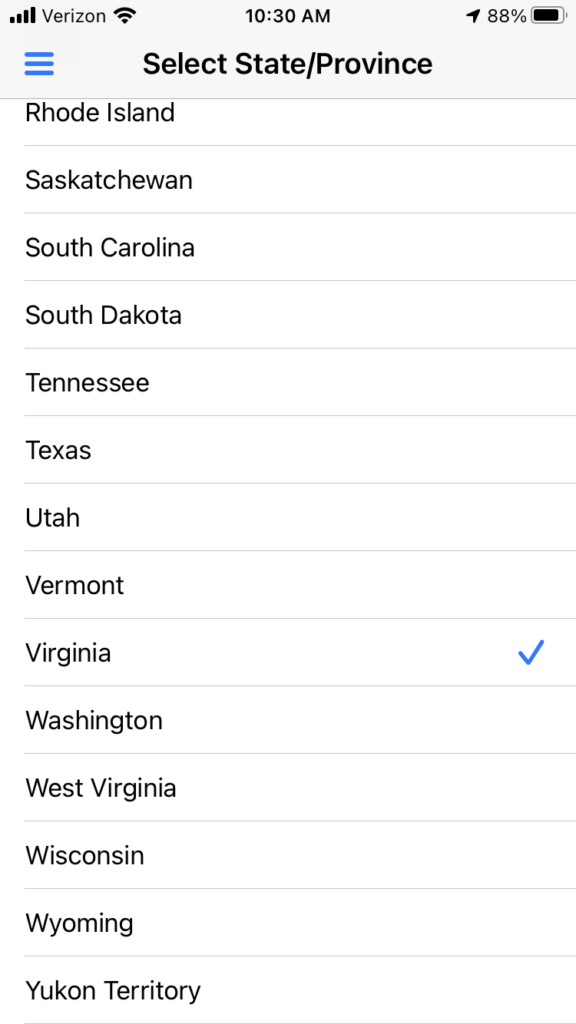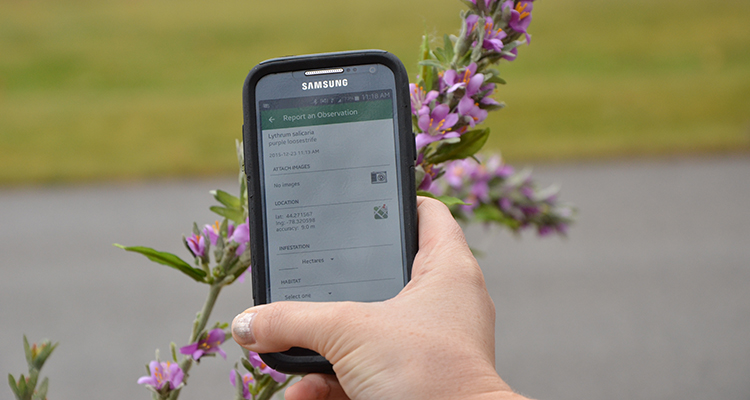Virginia Invasive Mapping Initiative
Documenting Escaped Non-native Plants with EDDMapS
Blue Ridge PRISM and our partners, Virginia Master Naturalists, Virginia Department of Conservation and Recreation – Natural Heritage, and EDDMapS are launching the Virginia Invasive Mapping Initiative to collect data on the type, distribution and spread of potentially invasive plants in Virginia. While we see many invasive plant species spreading in our parks and other public spaces, documentation of that spread is essential for informing public policy, determining whether an escaped plant is becoming environmentally harmful, public education, and decisions on management and control of invasive plants. Data is sorely lacking. Citizen scientists like you can report invasive plants using EDDMapS to ensure that invasive plants are better documented in each Virginia county.
What is EDDMapS?
EDDMapS is a suite of applications and programs for reporting, mapping and managing data on invasive species. It is heavily used across the country by conservation organizations and natural lands managers for determining where to direct resources for the control of plants that threaten the health of our ecosystems. Reports are verified by knowledgeable conservation professionals and scientists to ensure the accuracy and the validity of the data collected.
How do I get started?

Using your smartphone or tablet download EDDMapS from your app store. Look for EDDMapS. Note: there is an EddMapS Pro app, so make sure you have EDDMapS.
Once you have downloaded the app, select your state (Virginia) and set up an account if you do not have one. Start reporting! Check out ‘How to use the EDDMapS App’ to walk through setting up the app and making a report.
But I am not terribly tech savvy…can I make reports using my desktop computer?
Absolutely! Go to EDDMapS website and set up an account. Then look for the ‘Report Sightings’ tab and select ‘Plants’. You will need to upload your photos. Start reporting!
What plants are considered invasive in Virginia?
The Department of Conservation and Recreation – Natural Heritage has identified 90 plants that are invasive to Virginia’s forests, native grasslands, wetlands, or waterways. They are listed on the Virginia Invasive Plant Species List.
Are there specific plants I should be looking out for in Virginia?
Yes, representatives from Blue Ridge PRISM, Department of Conservation and Recreation – Natural Heritage, and Virginia Master Naturalists have identified 20 plants of interest in Virginia. However, make a report for any invasive plant! We want to know about it!
| Akebia quinata | Five-leaf akebia, Chocolate vine |
| Arum italicum | Italian arum |
| Berberis bealei (Mahonia bealei) | Leatherleaf mahonia |
| Berberis julianae | Wintergreen barberry |
| Berberis thunbergii | Japanese barberry |
| Buddleja davidii | Butterfly bush |
| Clematis terniflora | Sweet autumn virgin’s bower |
| Euonymus alatus | Winged euonymus, Burning bush |
| Euonymus fortunei | Winter Creeper |
| Hedera helix | English ivy |
| Hemerocallis fulva | Orange daylily |
| Hibiscus syriacus | Rose-of-Sharon |
| Miscanthus sinensis | Chinese silvergrass |
| Nandina domestica | Nandina, Heavenly Bamboo |
| Perilla frutescens | Beefsteak plant, Perilla mint |
| Pyrus calleryana | Callery pear, Bradford Pear |
| Quercus acutissima | Sawtooth oak |
| Rhodotypos scandens | Jetbead |
| Ulmus parvifolia | Chinese elm, Lacebark elm |
| Vinca minor | Periwinkle |
How do I make a great EDDMapS report? Any tips for reporters?

Good photos are key to expediting the verification process. Some species of invasive plants have unique characteristics that make them easy to identify from a good photo (mahonia or Japanese stiltgrass for example). Many species have native look a-likes (think tree-of-heaven vs. natives like sumac or black walnut) or may have multiple species in the same genus (Japanese wisteria and Chinese wisteria). Including several clear photos for each record is most helpful to verifiers. EDDMapS accepts up to five images per report along with captions for each image.
Learn More: Making a Great EDDMapS Report
Thank you to our project partners!




